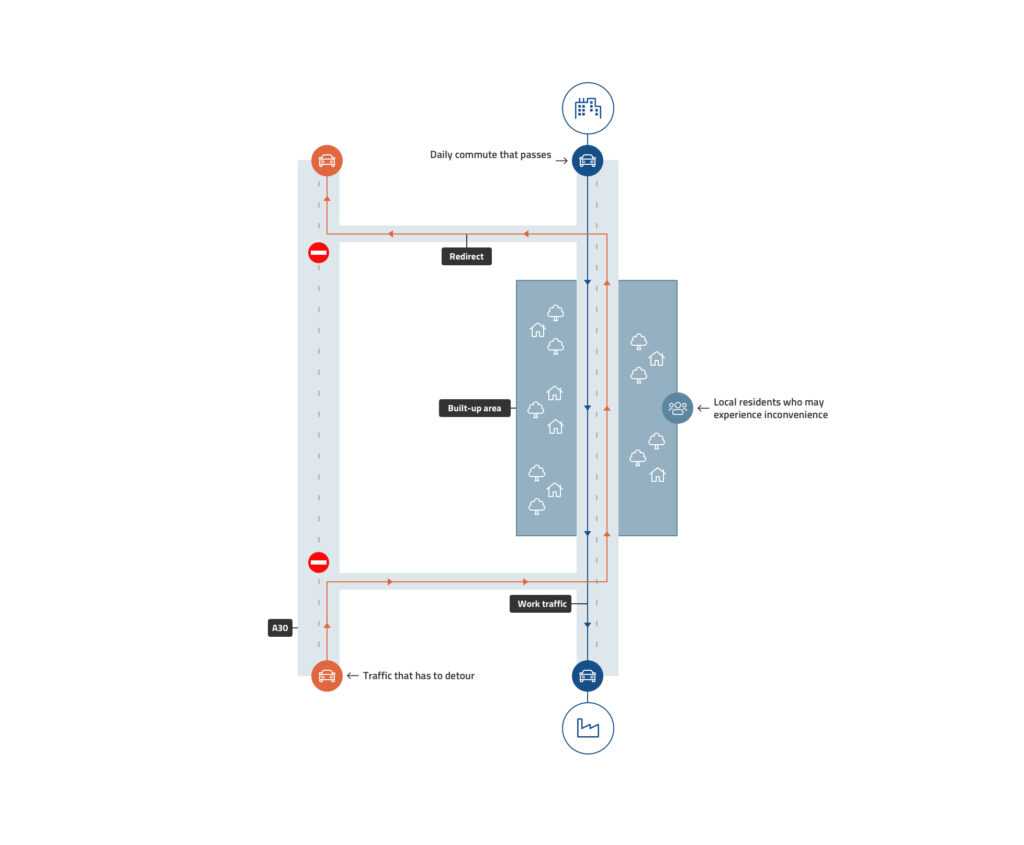
Less Disruption
Roadworks are often an inconvenience to local residents, road users and the business community. Unfortunately, these disruptions are unavoidable, especially where major, long-term roadworks are concerned. Road authorities have been working on limiting this inconvenience for years, and as well as introducing physical measures, they are turning to digital applications. Examples include not only the use of social media, analysis with floating car data and active Sat Nav-based traffic management but also the creation of safe workplaces for road workers by including digital advance warnings in navigation systems. Using the principle of “Less Disruption”, a range of digital options can be used to reduce inconvenience for the various stakeholders.
Our Less Disruption approach is the heading under which we offer this collection of digital applications, and upon which the work with our clients is based. The combination of dashboarding and directly communicating with stakeholders allows us to achieve optimal results.
Our Roadwork Traffic Dashboard means you always have insight into the current traffic situation. To reach travellers and local residents, we use Online Traffic Management, while providing alternative travel options through our Mobility Portal. You can manage diversions, road closures and restrictions yourself on our Traffic Reportal. This is a smart combination of tools that leads directly to Less Disruption.
Seven steps to results
According to Rijkswaterstaat, Less Disruption consists of seven steps:
- Smart planning
- Smart construction
- Mobility Management
- Traffic management
- Communication
- Public-oriented implementation
- Regional collaboration
Influencing travel behaviour in order to reduce the demand for car travel is known as Mobility Management. The deployment of the Mobility Portal and Online Traffic Management lets us help road users adapt their travel behaviour, for example by avoiding travel, travelling at different times, taking different routes or travelling by other modes than the car.
Traffic management is the coordination of road traffic by providing insight into the current traffic situation using a dashboard and analysis. In addition, we can use Waze messaging and social media to reach road users directly. Another possibility is detecting and acting upon breakdowns and incidents at an early stage.
Communication is more than just sending information. Thanks to social media, we also give the various target audiences the chance to respond to posted messages, allowing us to give local managers of clients and/or contractors the opportunity to respond to certain sentiments and to resolve any bottlenecks at an early stage. This kind of public-oriented implementation means irritations can be tackled at an early stage.
It is important that the relevant messages reach the right target audiences. The figure below is a simplified representation of these target audiences: Diverted traffic, daily commuting traffic and local residents who are experiencing disruption. Each target audience has its own communication needs. We work with the client to set this up to ensure Less Disruption.

